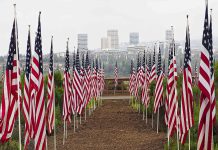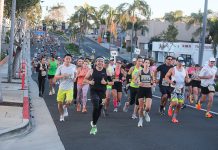Most discussions about a green or sustainable world are about energy. Me, I am passionate about water.
One of my favorite concepts is called “virtual water,” which considers how much water it takes to produce a good or service. I am not suggesting that Newport Beach set policy on virtual water, but I do think it may change the way we look at things, and my hope is that it can influence the decisions we make.
Let’s look globally first, where virtual water, (or “embedded water” or the “water footprint”) is most relevant. The entire international food trade, for one thing, looks like a flow between the water haves and have-nots. Two-thirds of all water abstracted from nature is used to grow crops, and that figure can be up to 95 percent in developing countries. Argentina exports water in the form of beef – it takes a lot of water to raise a cow – and Thailand in water-intensive rice. Meanwhile, our Midwest provides food aid – or is it water aid?
And as world population grows, so does the need for water.
Bringing the concept to store near you, is anyone wearing a cotton shirt? Besides food, cotton is the tall pygmy of water guzzling crops. One shirt requires about 650 gallons of water for the cotton and manufacturing and to get it to you. The virtual water footprint of an apple is 19 gallons; a banana, 27; a slice of bread, 10; a sheet of paper, 3; and a pair of leather shoes, 4,400, according to Waterfootprint.org.
To think about water differently, how many take a short shower? That is good. Now consider that the third most common refuse found in landfills today is food, according to the Environmental Protection Agency. There are several local entities piloting food waste diversion and composting projects that handle what we decide to discard, and the embedded water. This example may help bring virtual water into everyday decisions.
Here is my favorite example, and one that really makes me stop and think about water differently. I cannot look at a pot of coffee without thinking about how much water it takes to produce. A cup of coffee has a virtual water footprint of 37 gallons. So when you throw out the two remaining cups left in a pot of coffee, that is about 80 gallons down the drain. So much for the short shower. Water loss and water waste now have a quantifiable meaning, and the cup of coffee is an everyday reminder.
And, yes, there is an App for that: Google Virtual Water or Water Footprint to put on your handheld device (no longer a cell phone), which also takes a great deal of water to produce.
While on the subject of water, do you have your family emergency kit? Is it up to date? Do you have enough water to last seven days stored at your house? That is what is needed for the “Big One.” You can make do without almost anything, except water.
The best idea I have heard lately is the ReUse of alcohol containers. Alcohol functions well to inhibit the growth and reproduction of many microorganisms, including bacteria, fungi, protozoa and viruses. So, after you enjoy your favorite beverage, fill it with water, put a cork in it and store it. Hopefully you never have to use it, but you’ll be grateful to have it if you do.
What is your favorite green gift or idea? Email JimFitzEco@gmail.com




